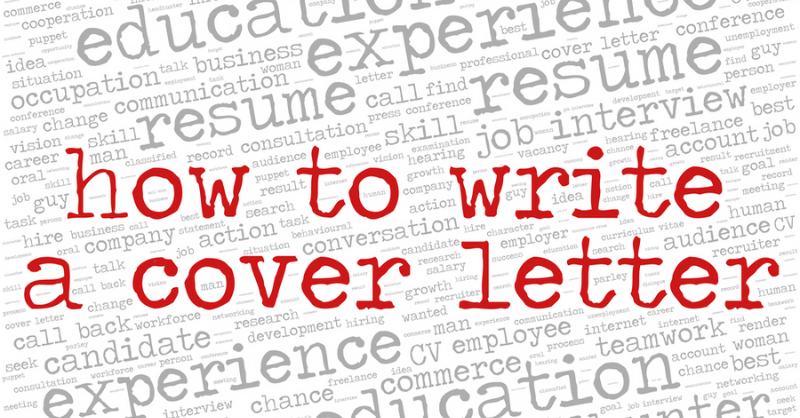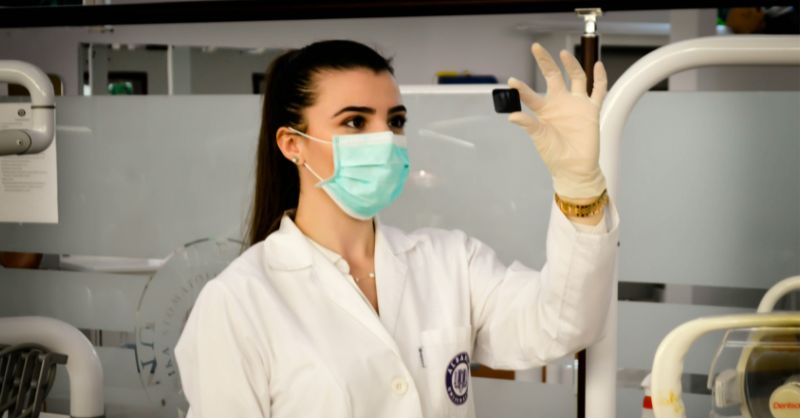Crafting a riveting cover letter is just as important as making your resume perfect. A cover letter can be the determining factor behind a call for an interview in your dream job. Hence, it is crucial to know how to write a cover letter because your cover letter will complement your resume.
But you can’t just send any cover letter. It has to be perfect. Well, how do you write the perfect cover letter? The kind of letter that will make the employer call you up immediately? By the end of this guide, you’ll know how to write a cover letter like that. You will be able to write it easily using a cover letter template and cover letter checklist.
Table of Contents
What is a Cover Letter for a Job?
A cover letter or covering letter is a formal letter that one sends along with a resume. A cover letter lets you introduce yourself to the hiring manager and provide context for your achievements and qualifications. It also gives you the chance to explain your motivation for joining the company.
Although it might seem a bit old-fashioned in 2023, cover letters are still required. You should always include a cover letter with a job application.
When Not to Include a cover letter?
When the job advertisement clearly states not to. In such a case, it is wise not to add a cover letter.
Also, no cover letter is better than a bad cover letter. But by the end of this blog, you’ll know how to make a cover letter that’s effective.
Did you know?
More than 95% of Fortune 500 companies use Applicant Tracking System (ATS) technology to screen resumes. A lot of resumes are automatically deleted by ATS. Due to ATS filtering, 75% of the resumes are never read by employers. (Source: CNBC)
So you don’t just have to worry about manual screening, but also about automatic filtering. That’s why we have designed a perfect CV Writing Masterclass to get your CV noticed by employers and get you your dream job. You can also learn helpful Job Interview Techniques
What is the Purpose of a Cover Letter?
A cover letter’s primary purpose is to acquaint the prospective employer with your unique talents, experiences, and skills. It also gives you a chance to request an interview to discuss employment possibilities and why you are a good fit for the company.
A cover letter provides context to your resume’s achievements and showcases your personality. In a nutshell, it elaborates the information included in your resume.
Many people struggle with what to write in a cover letter. Here are some critical points of a covering letter:
- Introducing yourself to the reader
- Responding to the requirements of the job
- Attracting the recruiter’s interest
- Persuading the employer to read your resume
Your covering letter (paired with your resume) helps managers and recruiters screen your job application. It would also help if you showed that you know how to make a positive contribution to the employer.
How to Write a Cover Letter for a Job?
All great cover letters are based on a proven, effective template. It should be a perfectly formatted and persuasive cover letter. The following steps will help you write a cover letter that is sure to serve its purpose.
- Choose a Professional Cover Letter Header
- Use Appropriate Greeting on Your Cover Letter
- Write a Compelling Opening Paragraph
- Explain Why You’re The Perfect Candidate
- Tell Them Why You’re Eager to Join
- Make Your Offer in the Closing Paragraph
- Use the Right Formal Closing
- Add a Postscript
- Postscript
- Review your Cover Letter
Choose a Professional Cover Letter Header
How to start a cover letter? Start with the basics, the cover letter header – contact details. The letter header of all professional cover letter for a job application must include the following:
- Your name
- Your phone number
- Your email address
- The date
- The name of the hiring manager/recruiter and their professional title
- The name and address of the company you’re applying for
You can also add these given below:
- Your professional title
- Your home address
- Links to your professional websites. (if you have any)
- Your social media accounts. (It is applicable only for LinkedIn and Twitter)
- Your city of residence. (it’s optional but adds a professional touch. You can include it if your cover letter is official)
Under your contact details, you should add the following information:
- The date
- The first and last name of the person you’re writing to, or the relevant department
- The company’s address
- The company’s phone number
- The hiring manager or company’s email address
Here’s an example of how that might look, depending on the template you choose:
Also, remember to keep your cover letter professional.
- Use an email address from a respected provider, for example – Gmail. If you have your personal domain, you can use it.
- Your email address should only include your first and last name. Simplymike@yahoo.com or AnnaBannana@gmail.com screams unprofessional.
- Don’t use your current work address while sending your email cover letter. It’s rude to both your current and potential future employer.
- Ensure your contact information is consistent across your resume, cover letter, and all social media profiles.
Pro Tip: If you don’t know the hiring manager’s name, use the name of the department in the address section. For example – XYZ Marketing Department.
Use Appropriate Greeting on Your Cover Letter
In case you are wondering – who to address the cover letter to? You address it directly to the hiring manager, who’ll read it.
The greeting of your cover letter or the salutation is usually the first thing the hiring manager notices. That makes it one of the most critical parts of a cover letter. However, there’s a great, foolproof strategy to make your greeting catch the recruiter’s attention. That is using their name. Start with –
Dear Chandler Bing,
Why? Because when we hear or see our name, it catches our attention. Also, when the hiring manager sees their name, they know that it’s personalised. That is a good thing!
For some people, using the first name might be too informal, but a full name is okay. The following are some good examples of opening salutations in a covering letter.
- Dear Ms Holmes,
- Dear Dr Brent,
- Dear Mr Halpert,
- Dear John Smith,
Not sure whether to use the recruiter’s first or last name?
It largely depends on the company culture. If you’re applying for a position in a relaxed and casual company, use the first name. But for corporate cover letters, it’s safer to go with the last name. Also, never start with ‘Dear Sir or Madam.’
How can you find out the hiring manager’s name?
Do some research. There are many ways to find out who your hiring manager is.
Check the company website or make a phone call to find out who ‘Whom’ is. Be the one who takes the extra step. It shows your attention to detail.
Who to address the cover letter if you can’t find the name of the hiring manager?
If you can’t find the name by any means possible, opt for one of the following. Also, avoid starting your cover letter with ‘To whom it may concern.’ Here are some ideas for you to start the cover letter:
To summarise, how to address a cover letter –
- Use this format: Dear Mr./Ms./Dr./Prof. Last name.
- Don’t address women as Miss or Mrs.
- Avoid using a generic or gender-specific greeting. Never use ‘To whom it may concern’ or ‘Dear Sir/Madam’ as they sound antiqued and insincere.
- Use first names when the employer sets the precedent or the company culture is casual.
- Never misspell the name.
After writing the header and greeting, it’s time for the central parts of your cover letter. Go for a three-paragraph cover letter format as below –
- The first paragraph to grab the hiring manager’s attention
- The second one to show what you’ve got to offer them
- The third to prove that you’ll fit in
However, you may want to add a fourth to include a call to action and closing remarks. While writing this section, always keep the following question in the back of your mind: “Why should we hire you?” Be as convincing and confident as possible in your cover letter to get that interview you want.
Write a Compelling Opening Paragraph
A strong introduction is what gets the hiring manager hooked. It would help if you made your cover letter introduction captivating enough to hold the hiring manager’s interest. Because these few sentences at the beginning of your covering letter will determine whether the hiring manager will read on.
Bring out the storyteller in you. If possible, tell a story. Explain how you came to learn about this company creatively. Answer what brought you here? Try to engage in a way that makes you stand out from the rest.
Below are some examples of intro paragraphs.
Why is it an okay opening? Because it provides no real value. The bottom line is basically saying, “I’ve already done this job, so I think I’d fit in.” But that’s not what the hiring manager is looking for in a candidate.
That’s a properly written cover letter opening example. Also, the response to the latter cover letter first paragraph will be more positive.
However, there are a few different yet effective strategies for a cover letter opening. You can highlight your achievements or show how well you know your prospective employer’s needs. You may also choose to base the intro on your enthusiasm for the position. Demonstrating your strengths in a few powerful lines is also a good idea. Which path you want to take depends mostly on your personality.
Explain Why You’re The Perfect Candidate
Every employer wants to know what attributes make you the perfect candidate for that job. But remember that your cover letter is not a trophy case. So a job posting from your dream employer means you don’t just show off your best assets.
It would be best to get the hiring manager exactly what she’s looking for, if not more. You must show that you meet all the job specifications. Also, you satisfy the company’s specific needs.
That’s why you must tailor your covering letter as per the job requirements. But don’t just tell them you can. Prove it. Tie a job requirement to your experience and achievement. For example, if a company needs a marketing manager, tell them what you are bringing to the table.
In the first sentence, show that you’re good at what you do but without bragging. Then you can explain how your previous experiences will help you make positive contributions to your future employer.
When you’re applying to new positions, it’s likely you’ll not have the same experience requested. As a job seeker, you can impress employers by identifying your transferable skills related to new positions. Because employers would rather know how your previous experiences will shape your future decisions.
Tell Them Why You’re Eager to Join
If an employer is willing to hire you, it’s because they think you’ll satisfy their requirements. But they also want you to fit in with the company. They want to ensure that you will feel rewarded enough to stay there for an extended time.
You must show the hiring manager why you want this particular job. This is especially important when writing an entry-level cover letter. Enthusiasm and passion prove that you’ll hit the ground running.
Remember that generic cover letters don’t win jobs; tailored and targeted ones do!
Here’s an easy way to do it:
- Start with a company fact – for example, an upcoming project that you find intriguing
- let them know why you find it interesting
- Relate your experiences and knowledge with the potential success of the project
Pro Tip: If you’re really eager to work for a specific company, but there is no vacancy, try writing a letter of interest for a job. That way, you can uncover unadvertised vacancies.
Make Your Offer in the Closing Paragraph
A cover letter ending is one of the most decisive parts of a covering letter. Generally, it should amplify the impression you’ve made so far. It has to make the hiring manager intrigued as she starts reading your resume.
But how can you make the best cover letter ending? By providing value!
Finish with a call to action (like asking for an interview or a meeting). Tell the recruiter that you’re looking forward to meeting in person and discussing how your experience and knowledge can help your future employer reach their goals.
Like in this cover letter example:
Some mistakes you should avoid in the final paragraph of your covering letter are:
Don’t come off as needy
Instead of focusing on how much you want the job, focus on what you have to offer.
Don’t be a cliché
Just repeating clichéd phrases like “Thank you for your consideration and your time” doesn’t help you stand out. The hiring manager wants to see what sets you apart from other candidates.
Use the correct cover letter formatting
A professional cover letter format is about 300 words, single-spaced, and uses a single A4 page. The font should be clear, easy to read and professional. Here are some great cover letter fonts that you can’t go wrong with –
Use the Right Formal Closing
Once you’ve written your cover letter’s body, you must put a proper formal closing salutation at the end.
You can write ‘sincerely’ and follow it with your full name. Adding your handwritten signature is optional. However, we recommend it for more formal cover letters. You can scan your written signature into your covering letter under your typed name.
If you don’t want to use ‘sincerely’, feel free to use any of the following synonyms.
Sample cover letter sign-offs :
- Thank you,
- Best regards,
- Kind regards,
- Sincerely,
- With best regards.
The ones listed above are the safest options. But you can also choose one of the following –
- Regards
- Yours truly
- Sincerely yours
- Respectfully yours
- Thank you for your consideration
Pro Tip: It’s a good idea to repeat your contact information below your sign-off. Such as your address, LinkedIn profile, email address and telephone number.
Add a Postscript
All the above sections are necessary for a good cover letter format. But there’s a trick you can use: a postscript. The postscript is an incredible hack that nobody uses.
Adding a P.S. is like a magnet. It tells the hiring manager, “you cannot miss this information.” This is an excellent way of highlighting impressive information.
For example, you can use the postscript to tell the recruiter something impressive about your career. And tell them you’d be happy to provide them with more details if they find it interesting.
Take a look at the postscript example below.
Also, remember always to send a job application follow-up email.
Review your Cover Letter
After you’re done writing the cover letter, ensure that it complies with the following practices.
- Use the correct cover letter formatting
- Avoid overly-formal tone
- Omit unprofessional and unnecessary information
- Proofread your cover letter
Usually, the font size should be between 10 and 12 points. The colour should be consistent throughout (typically black). Your cover letter margins should be one inch on each side to make sure it’s easily readable. Also, the content should be in a proper format to make it look professional.
Avoid overly-formal tone
A typical writing mistake is thinking that long sentences with overly formal wording make you sound more professional. In reality, such a choice of words makes your cover letter seem stiff and hard to read.
However, to improve your cover letter’s tone, you can try these:
You want to appear sincere, approachable, and real in your cover letter. So make this come through in your writing instead of being too formal.
Omit unprofessional and unnecessary information
Adding the following information makes your cover letter unprofessional. And it may even invite discrimination from your potential employer. So you should remove any of the following:
Proofread your cover letter
Even if you’re tired of reading it by this point, you have to proofread it.
Don’t just use spell check and scan the page for typos because you’re likely to miss mistakes. Here are two quick tricks you can use to catch sneaky errors and make nice edits:
Read your cover letter out loud
Because doing this will force you to notice every word, sentence, paragraph, and punctuations. Also, you’ll find hard-to-read sentences and then adjust them as necessary.
Change the font
Switching your cover letter to a different font can help you notice mistakes you’re otherwise likely to skim over and miss.
After you’re done proofreading your cover letter, ask someone else to double-check it. They can provide helpful feedback about whether your letter is clear and well-written. They can also notice small grammar and spelling errors you’ve missed.
How Long Should a Cover Letter Be?
Always keep it short. A cover letter is not meant to summarise your resume but to enhance it. So don’t write more than one page. By exceeding the one-page limit, you risk turning off the hiring manager before they’ve even glanced at your resume.
The answer to how many words should a cover letter be is similar. How many words a cover letter should be, depends on how many words you can fit on one page. In terms of word count, it means that you should not exceed 300 words.
As a rule of thumb, try to stick to around three paragraphs. Four paragraphs at most and that’s not counting the salutation and sign-off.
Pro-Tip
Don’t submit your cover letter as a pdf. Always submit your cover letter as a .doc or .docx file. Word documents are the most common. And they’re very easy to email or attach, open, and read.
Cover Letter Checklist: What to include in a cover letter?
Here’s a cover letter checklist to make sure you have a cover letter without any error.
Additional things to include in your cover letter
This is only applicable to freshers and people who don’t have any experience. In such a case, you may include the following:
Download Free Cover Letter Template
After completing the whole cover letter, it should look somewhat like this –
Click to download this free cover letter template
Closing Notes
Now that you have the perfect cover letter to get that job, prepare for the Job Interview.
Interviews Skills Training for Jobs helps a lot in that regard. After getting that long-awaited call for an interview, it all comes down to how well you do on the job interview. So you must take Job Interview Preparation to get your desired job.
Further resources
- Free CV Templates: Learn How to Write a Standard CV
- How to Write a Cover Letter: Download Free Cover Letter Template
- Minutes of Meeting: How to Take Meeting Minutes
- 10 Quick ways to Shortlist Candidates For An Interview
- How to Become a Recruitment Consultant: Explore Jobs & Career Paths
- Working in Recruitment: The Good, The Bad and The Ugly things
Recent posts
- Line Management: How to be a Good Line Manager?
- How Long Should a Health Sector Career Take?
- The Importance of BSL in Everyday Life
- Why Corporate eLearning is Essential for Organisational Training
- Take your Business Expertise to the next level: Get your MBA
- Read to Lead: Books That Cultivate Effective Leadership Skills
- Crafting an Effective Home Schooling Curriculum: A Comprehensive Guide
- Learn How to Write a Term Paper | From Start to Finish
- Student Entrepreneurship: Creating and Selling Custom T-Shirts as a Learning Experience
- Easy Steps to Create Your Business Proposal. Contract proposal







 October 06, 2023
October 06, 2023








